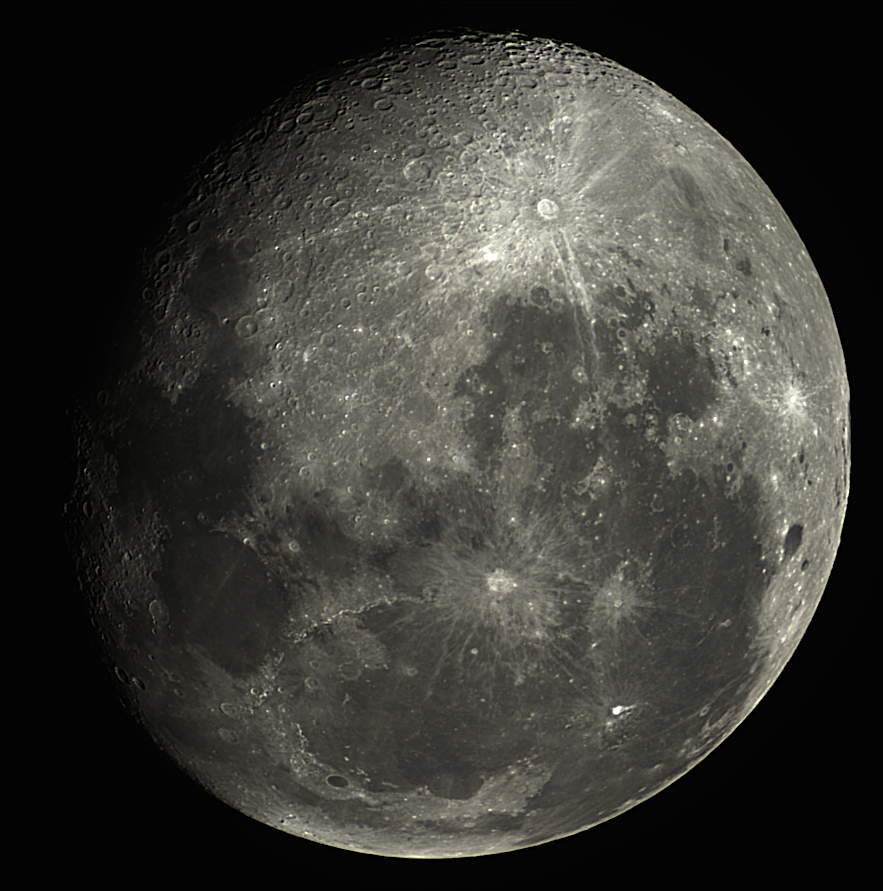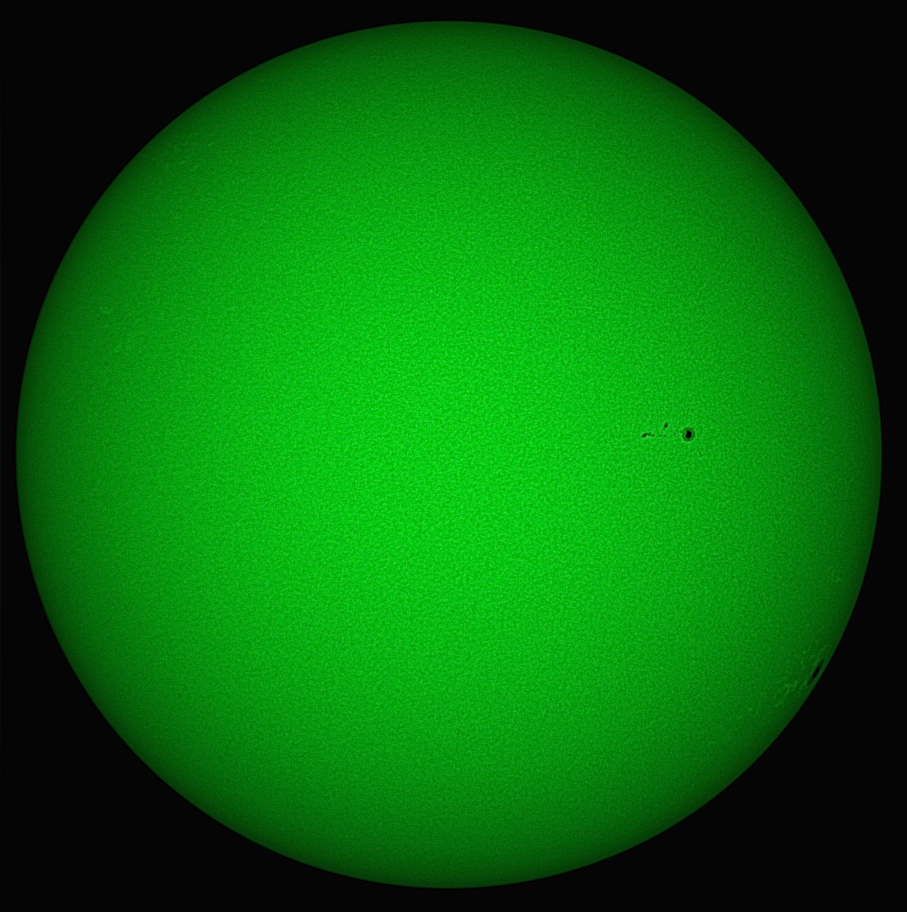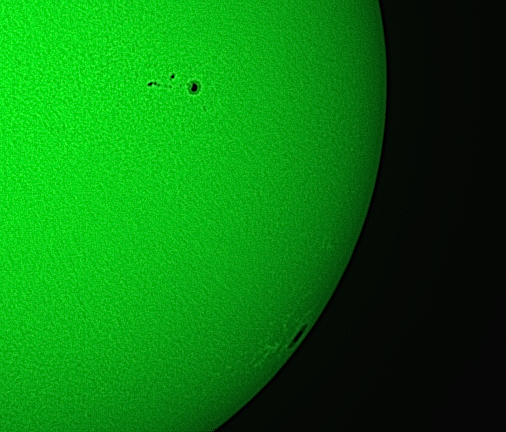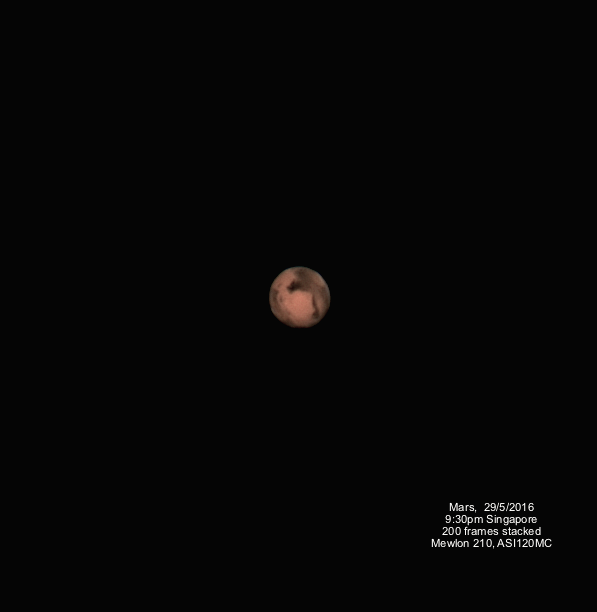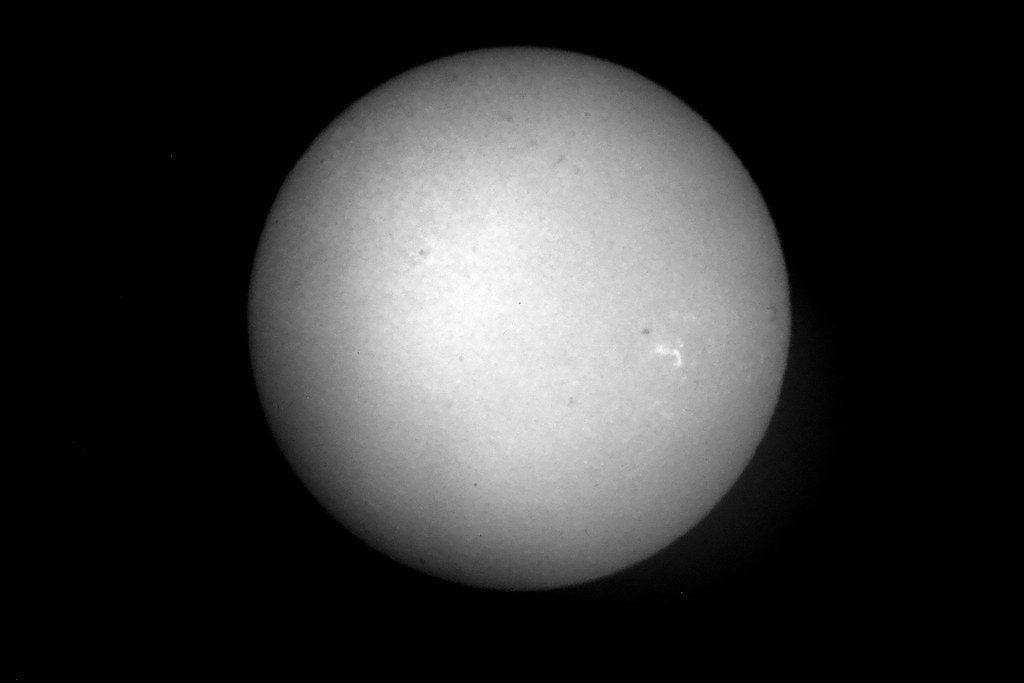 Sun 24 Apr 2016 by Peter Loo, on Flickr
Sun 24 Apr 2016 by Peter Loo, on FlickrSolar System objects
Re: Solar System objects
So, i did image again on 24 Apr 2016 after 4.00 p.m. using the shorten nose piece, it focus better, used it briefly & quickly switched to test a PST to Digital Cam dedicated eyepiece projection made by TS Service, part number is PSTfotoR. Using same old Canon 500D, filter mod camera, i got this with single shot 1/30s, ISO 200, Monochrome Picture style. The provided 25 mm eyepiece should be pull out a little (about 3 mm) for the most convenient focusing range to be attained.
 Sun 24 Apr 2016 by Peter Loo, on Flickr
Sun 24 Apr 2016 by Peter Loo, on Flickr
 Sun 24 Apr 2016 by Peter Loo, on Flickr
Sun 24 Apr 2016 by Peter Loo, on Flickr- Great Red Spot
- Posts: 409
- Joined: Sun Sep 29, 2013 3:55 pm
- Favourite scope: Newtonian
Re: Solar System objects
If you are sure that your focus is spot on, then I think the cause of the blurring might be that 1/30s is too slow. I use much faster speed for white light. But of course I haven't done H-alpha before.
IMO video is much easier. Just let the sun drift across. Then Registax will take care of it.
Here are some examples:
https://www.youtube.com/watch?v=mOoRUmN ... e=youtu.be
https://www.youtube.com/watch?v=FUyjymo ... e=youtu.be
IMO video is much easier. Just let the sun drift across. Then Registax will take care of it.
Here are some examples:
https://www.youtube.com/watch?v=mOoRUmN ... e=youtu.be
https://www.youtube.com/watch?v=FUyjymo ... e=youtu.be
Re: Solar System objects
Hi Alvin, thanks for the help, yah ! i am facing quite a bit of challenge in obtaining a good focus as using the rim to estimate, probably have to take a few sets of images & use the best one. But i see that yours are almost all razor sharp, probably because you are using a good scope (i saw a Tak is being deployed) and also your wavelength used might be more suitable 
- Great Red Spot
- Posts: 409
- Joined: Sun Sep 29, 2013 3:55 pm
- Favourite scope: Newtonian
Re: Solar System objects
The 1-shot images I got with my compact camera aren't so good though. That's why I prefer video.
But I have learnt a few tips. The middle part of your image is brighter. That is indication that you can reduce exposure even more. Set the ISO as low as possible (say 100 or 200), then reduce exposure time accordingly (as fast as possible). As a general rule, it is better to underexpose than to overexpose.
Focusing is always a challenge for solar system imaging. If you use a rough focuser, the image will vibrate when you are focusing, making things difficult. So I use a Feathertouch focuser.
But I have learnt a few tips. The middle part of your image is brighter. That is indication that you can reduce exposure even more. Set the ISO as low as possible (say 100 or 200), then reduce exposure time accordingly (as fast as possible). As a general rule, it is better to underexpose than to overexpose.
Focusing is always a challenge for solar system imaging. If you use a rough focuser, the image will vibrate when you are focusing, making things difficult. So I use a Feathertouch focuser.
- Great Red Spot
- Posts: 409
- Joined: Sun Sep 29, 2013 3:55 pm
- Favourite scope: Newtonian
- Great Red Spot
- Posts: 409
- Joined: Sun Sep 29, 2013 3:55 pm
- Favourite scope: Newtonian
- Great Red Spot
- Posts: 409
- Joined: Sun Sep 29, 2013 3:55 pm
- Favourite scope: Newtonian
Re: Solar System objects
Hello all,
Have not tried imaging planets since I sold my tracking mount. Since Mars is at opposition, I decided to try imaging it with my Mewlon 210 and ASI120MC. I have no tracking so I just let the planet drift across the field of view. That gives me only about 400 frames, out of which I stacked 50%. That's a far cry from what I used to do when I had tracking - stacked at least 1000 frames. Also, I have to shoot through a little bit of clouds. Honestly the result is quite satisfactory since my expectation is well managed!
Here it is:
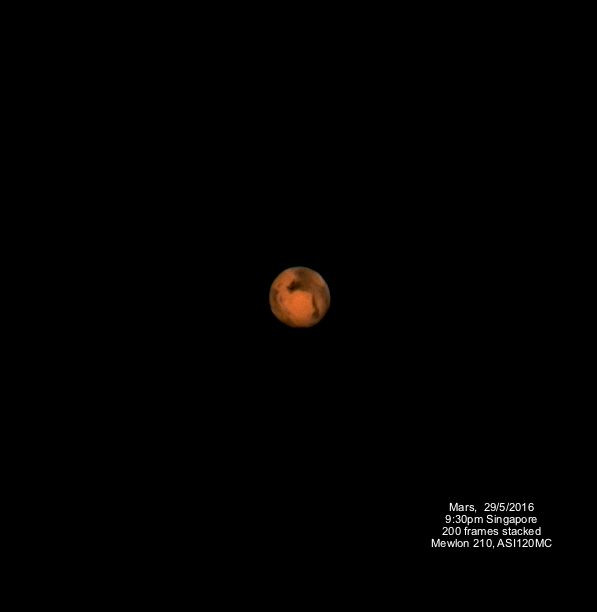
Here's a simulation from SkySafari:
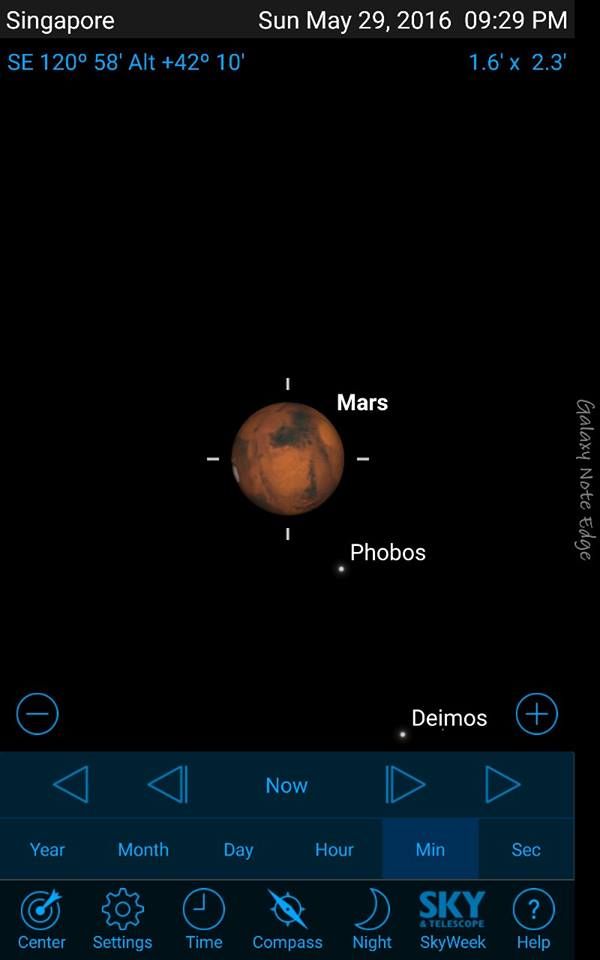
And a video:
https://www.youtube.com/watch?v=m_QaC2F ... e=youtu.be
Have not tried imaging planets since I sold my tracking mount. Since Mars is at opposition, I decided to try imaging it with my Mewlon 210 and ASI120MC. I have no tracking so I just let the planet drift across the field of view. That gives me only about 400 frames, out of which I stacked 50%. That's a far cry from what I used to do when I had tracking - stacked at least 1000 frames. Also, I have to shoot through a little bit of clouds. Honestly the result is quite satisfactory since my expectation is well managed!
Here it is:

Here's a simulation from SkySafari:

And a video:
https://www.youtube.com/watch?v=m_QaC2F ... e=youtu.be
- Great Red Spot
- Posts: 409
- Joined: Sun Sep 29, 2013 3:55 pm
- Favourite scope: Newtonian
Re: Solar System objects
Nice shots!
- Airconvent
- Super Moderator
- Posts: 5804
- Joined: Tue Sep 30, 2003 11:49 pm
- Location: United Federation of the Planets
Re: Solar System objects
The shots are well done, GRS! Mars is exciting right now...especially with a large aperture scope! 
The Boldly Go Where No Meade Has Gone Before
Captain, RSS Enterprise NCC1701R
United Federation of the Planets
Captain, RSS Enterprise NCC1701R
United Federation of the Planets
